If you think business process mapping is one of the recent trends that have evolved in the world’s wake for digital, you’re wrong. The concept dates back to early 1920s when Frank Bunker Gilbreth, a veteran industrial engineer, and efficiency expert designed the process flowchart for American Society of Mechanical Engineer.
The process flowchart was designed to eliminate loops and redundancies from different processes and operations and streamline the tasks involved in a process to increase efficiency. Since work efficiency was a burning issue in that era of industrial revolution, the concept was highly applauded. From then on, efficiency experts and strategy makers started implementing the idea, after customizing it to the requirements of their own processes.
Hence evolved process mapping and a century later, BMP or business process mapping has become an integral component of business process workflow automation – and digital transformation, in the larger scheme of strategic implementation.
Business Process Mapping – digging into the concept
As per standard definition,
Business process mapping, a component of Business Process Management (BPM), is a framework used to create visual representations of work processes. Business process mapping shows the relationship between the steps and inputs to produce an end-product or service and is are concerned with what a business does, why it does what it does, what the standard is for success, who is responsible, and when and where different steps will occur.
In layman terms, it is a template-based task of standardizing the way a process should be performed and in the bigger scope, defines what a business does, the chain of command, and a parameter to measure the efficacy and efficiency of a process. Business process mapping involves some essential components that include:
- Process – the entire workflow from initiation till completion
- Tasks – the breakdown of the entire process or operation into smaller, standalone functions
- Flow – a segway of different tasks, defined by arrows and connecting lines
- Events – the triggers or cues that cause a process to start, pause, continue, redirect or end
- Gateways – agile decisions that tend to alter the course of a process
- Participants – the individuals involved in process operation, with assigned roles
Over the course of time, and especially during the past decade, business process mapping has seeped into the administration, strategic, and operational fabric of an enterprise’s setting. Regardless of the size and industry, organizations are using business process mapping for a variety of functions such as sales, audits, cost management, business process workflow automation, change management, crisis response and control, automation, initiating innovation, and to measure the outcomes of a task or process.
More specifically, it is being implemented and used for internal audits, standardizations, automation and upgrading, internal and external communications, training and organizational development, and compliance with international organizations such as ISO 9001 and Sarbanes-Oxley Act 2002 – in public as well as private sector organizations alike.
But…
Why is business process mapping important for an organization?
Let’s find out.
Business process mapping, in the larger scheme of DT, has emerged as a critical success factor for businesses – out of intensifying market competition and the global leap towards digital. It has become ever more crucial for businesses to create user-centric processes aimed at creating opportunities form both operational and user experience standpoint, and streamlining various task, operations. That is in addition to the need to develop and foster an efficient workflow system. Business process mapping is important for:
- Smooth and efficient inductions and onboarding new employees
- Efficient, on-point communications, for delegating tasks
- To keep the stakeholders in the loop
- Innovation, re-engineering, improvement, and upgrading of processes
At Infowise, we are serving as a strategic partner, assisting public and private enterprises in their digital transformation endeavors with our scalable, smart and futuristic tools, software and applications. Our product Infowise Ultimate Forms contains more than 20 SharePoint components developed to give you the power to innovate, automate and scale up your processes. Our product has been designed for optimum interoperability and seamless integration within SharePoint. It constitutes the structural foundation for digitization and facilitate your transition to digital transformation.
Add your comment
Flexible Forms
Convenient responsive modern forms, featuring tabs, section and column permissions, dynamic rules, repeating sections, electronic signatures and input validation, while keeping all your data safely inside SharePoint.
Smart dynamic SharePoint forms provide an exceptional user experience, improve data quality and simplify business processes, saving you valuable resources.
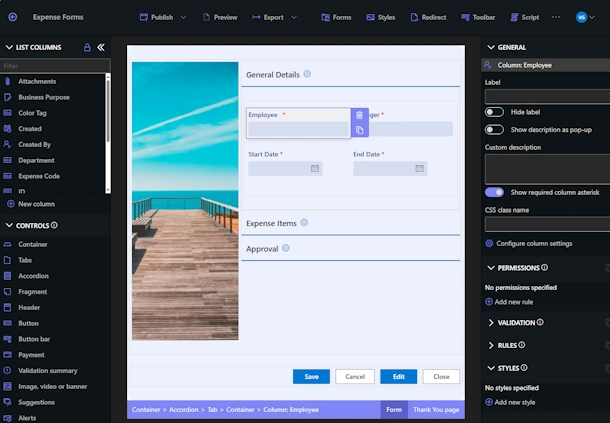
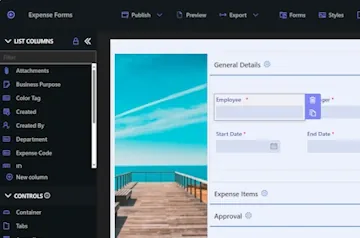
Intuitive Automation
Replace complex SharePoint and Power Automate workflows with simple, but versatile Actions to create and update data inside SharePoint and in a variety of integrated applications, such as Exchange, MS SQL, Teams and many more.
By reducing the learning curve, you empower more people in your organization to create and manage business solutions, successfully removing bottlenecks.
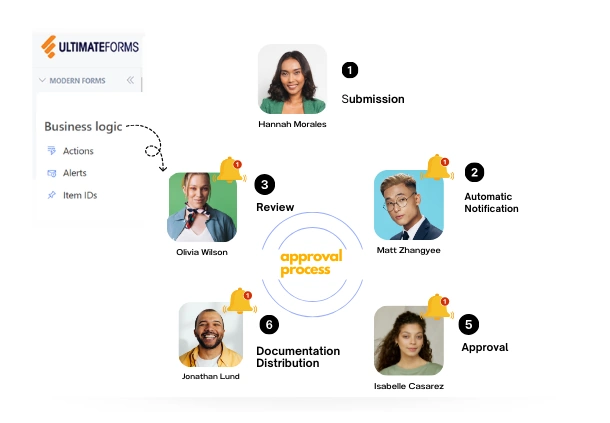
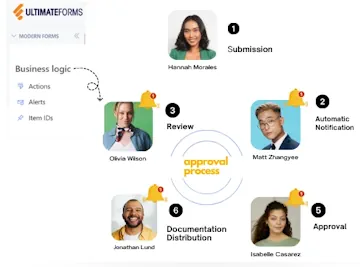
Clear Reporting
Present data as actionable insights with detailed shareable reports, dashboards, KPIs, calendars and charts.
Everyone is able to visualize information in an accessible fashion, improving responsiveness and accountability.
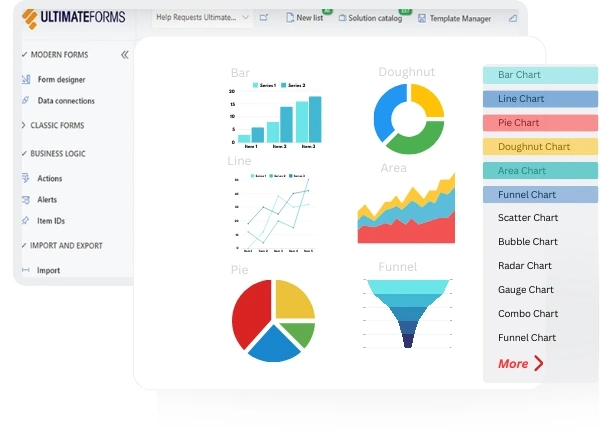
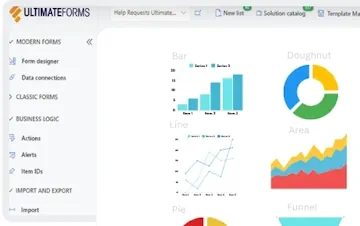
100’s of Templates



